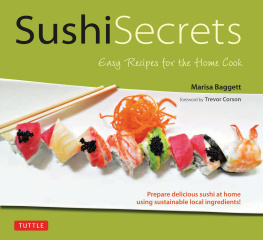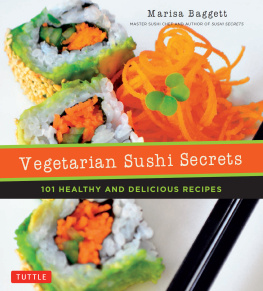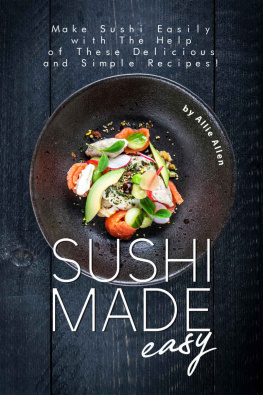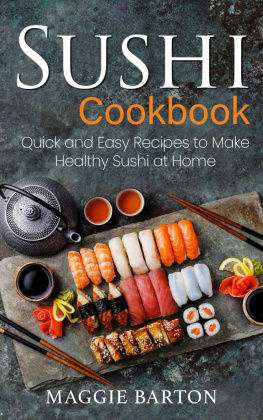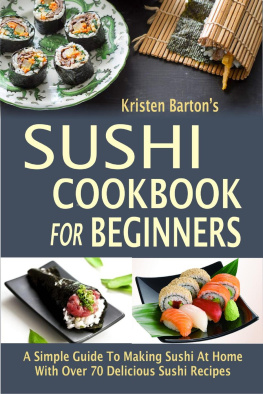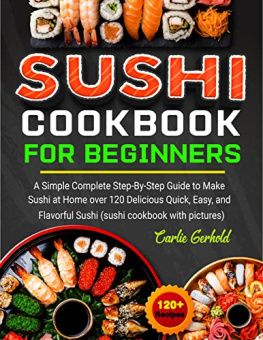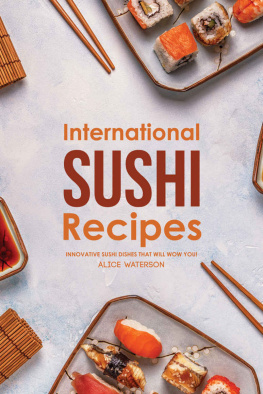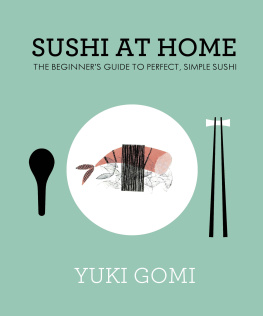To my Stan, youre the greatest. Cheers for enduring the smell of Sushi Rice every morning with our morning coffee, enduring the afternoons of sushi trials and for encouraging me (even after I caught the stove on fire) to write a sushi cookbook. I love you.
To Hal and Dorris Baggett, loving parentswhere would I be today without chocolate giraffes, all of your encouragement, coffee pep talks, sushi tasting and sushi making?
Thank you, Bud Sperry, editor extraordinaire, for finding me. And then for the ability to deal with me flip flopping back and forth between meticulously and casually writing a book. Awesomeness.
It would have taken ages to finish this book without my fantastic assistant. Kevin Sullivanthank you for hanging in there with me, reading my mind, putting out my fires, entertaining me with your observations on hon dashi and mirin , and otherwise lending a hand.
Chef Nick Snickalous Scott. I appreciate you. Gracias and much love, bro.
To Ellen Chapman, sushi frolic organizer of champions, thank you for taking that weight off my shoulders. And for all who attended, your comments, notes and suggestions were tremendous nuggets of enlightenment.
And to my great friend, Sheryl Gordenthank you, thank you, thank you for everything.
Trevor Corson and Bun Lai, I still maintain that you guys are sushi super heroes. For encouragement and supporting the good cause, I will ever be inspired. Arrigato.
Finally, a very special thanks to Casson Trenor, whose enthusiasm on all things ocean preservation are so infectious, that even the most unaware individual couldnt escape a pep talk without gaining a sense of activism. Thank you for all of your support.
Brown Sushi Rice
The use of a long grain rice may seem counter intuitive for preparing sushi. But then again, so does using brown rice. Just after the rice is tossed in the dressing it may seem overly sticky. This is okay. Once the rice cools to room temperature, the stickiness reduces greatly and it becomes a more willing participant in the sushi making process.
PREP TIME: 30 MINUTES
COOK TIME: 50 MINUTES
TOTAL TIME: 1 HOUR 20 MINUTES
MAKES ABOUT 6 CUPS (1 KG) BROWN SUSHI RICE
2 cups (500 g) long grain brown rice
4 cups (1 liter) water
cup (160 ml) rice vinegar
cup (80 ml) honey
1 tablespoon raw sugar 2 teaspoons coarse sea salt
Place the rice in a medium bowl and cover it with cool water. Let the rice soak for 15 minutes. (Some rice hulls may float to the top during this time. I like to keep them. The darker flecks give the finished rice character.) Drain the rice in a fine mesh strainer.
Place the rice and measured water in a rice cooker. Cook for exactly 50 minutes. At some point before, the rice cooker may indicate that the rice is done. Do not lift the lid or stop the cooking process before 50 minutes.
While the rice cooks, prepare the dressing. Stir together the rice vinegar, honey, sugar, and sea salt in a small, non-metal bowl. Whisk it vigorously until most of the sugar and salt dissolve, about 2 minutes. Set the mixture aside.
Spoon the steamed rice onto a flat cutting board. It should seem a bit moist and starchy. Spread the rice into a thin layer across the cutting board. Drizzle cup (80 ml) of the dressing over the rice. Gently toss it. Add the remaining cup (80 ml) of the dressing and toss well.
Allow rice to cool, uncovered for 10 minutes. Flip the rice over and let it cool for 5 minutes. Place the rice in a large non-metal bowl and cover with a damp, lint-free cloth until ready for use. Use it within 4 hours.

Prepare the rice for soaking.

While the rice steams, mix the marinade.
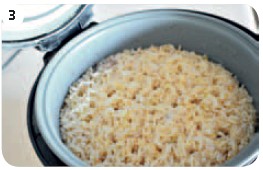
The steamed rice will seem a bit moist.
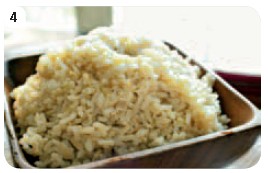
Toss the steamed rice with the marinade and place in a bowl until ready for use.
Buying, Cleaning and Cutting Fish for Sushi
Next to the proper preparation of Sushi Rice, selecting and purchasing the right seafood varieties is an essential part of the sushi making process. This doesnt have to be a daunting task. Great seafood can be purchased from a number of sources. Eager to meet the needs of an ever-increasing number of novice sushi makers, specialty grocers often have shipments of fresh, sushi quality seafood. This can be quite convenient for beginners or those strapped for time as most of the cleaning work is done for you.
When considering which seafood items to purchase, always take into consideration the origin and method in which the seafood has been caught. Even though nearly any species in the ocean can be caught and shipped to your door via the convenience of overnight global shipping services, the spirit of the seafood used for sushi should still remain with a local conscious. Consideration should also be given to what impact this may have on the oceans. It is never in fashion to use seafood acquired through bad farming practices or at the expense of the ocean.
For most of the recipes throughout the book, it is suggested that you purchase fillets or parts of seafood versus the whole fish. When purchasing seafood, consider the following:
Smell Seafood should have a fresh, ocean smell. If you are turned off by the smell of any seafood, it is best avoided.
Taste It never hurts to ask for a sample of what youre about to purchase. Many seafood counters will happily provide you with a sliver to test. On your tongue, fresh seafood should have a pleasant, non-grainy texture. And, of course, the flavor should be good.
Appearance The portion of a fish fillet most desired for sushi use is the thicker part from the head side. The tail-side pieces are too sinewy and offer very little for cutting. Fillets should be whole and firm. Pieces that are smashed, spilt, or look like they may have otherwise been damaged are best avoided. The color of the fish should be vibrant and the overall appearance should not be dry.
Frozen Seafood The idea of frozen seafood may not immediately cross your mind when it comes to sushi. However, if youve eaten sushi from a restaurant in a landlocked location you have most likely been served something that has been previously frozen. Actually, most sushi restaurants, landlocked or by the ocean, serve some form of frozen products. This is not a bad thing. Some seafood is frozen within minutes of being caught at sea with specialty equipment. This freshly frozen seafood is often better because it preserves the fish in its prime rather than spending a couple of days on ice waiting to be shipped. Frozen seafood should be allowed to thaw in the refrigerator overnight.
Types of Fish Used for Sushi

Albacore Tuna The Hawaiian tombo variety of fresh white tuna is preferable. The loin color ranges from light pink to a faint red. In fact, the very best cuts can often resemble light colored yellow-fin tuna. If tombo loins are unavailable, use shiro maguro or albacore tuna loins. For either variety, cut away the dark red blood line before use. If using shiro maguro, use a cooking torch to sear the outer portion of the fish.

